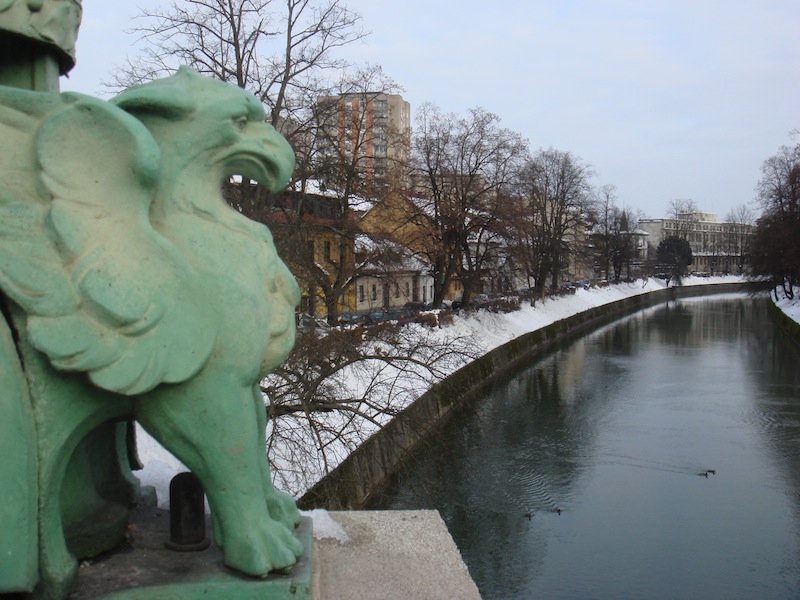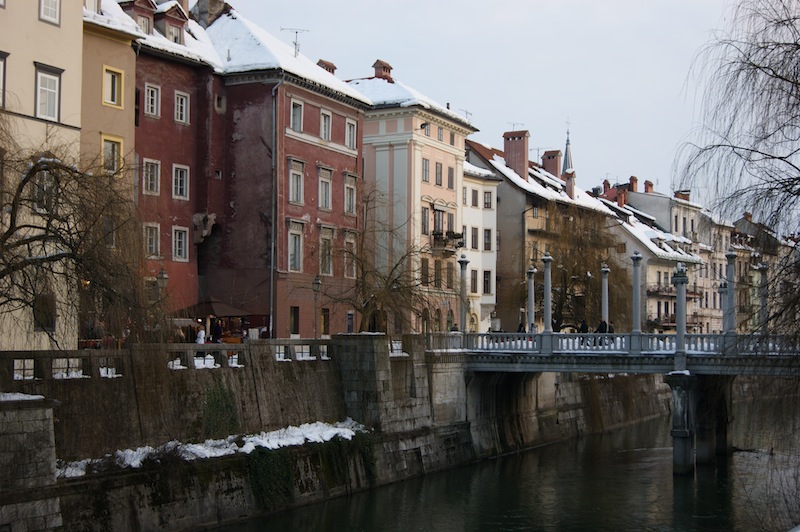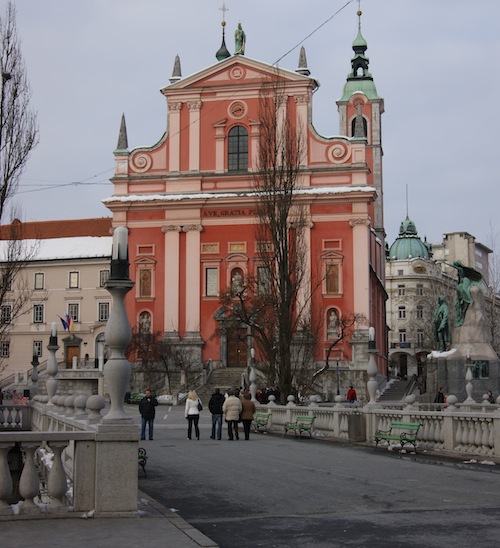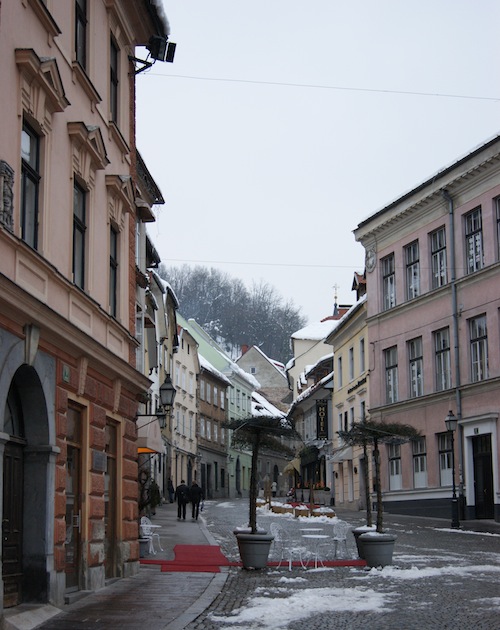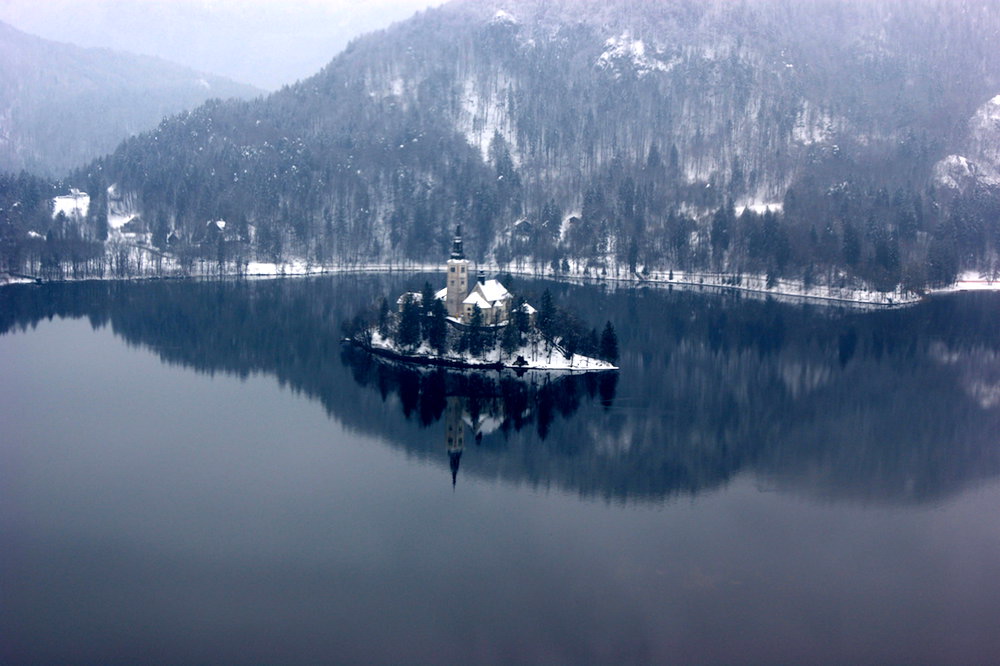We’re a pair of old romantics. We visit cities in the middle of winter in the hope of finding snow that’s knee-deep on the ground, of discovering cosy bars with roaring fires and great beer. It’s why we went to Ljubljana, the modest capital of Slovenia.
The old Communist bloc country was indeed dressed in snow. In parts the city looked as pretty and as romantic as we’d hoped. Elsewhere, no end of the white stuff could save it from looking drab and uninviting in the Soviet style. But while it lacked the big attractions of a big city, we found Ljubljana a great place to visit for a day or two and, thanks to its huge student population, it had a real buzz about its nightlife.
Ljubljana is easily explored on foot and its historic heart has cobbled streets, picture-postcard buildings and charming, colourful churches. There are streets and structures from the baroque building boom that followed an earthquake in 1511, sitting alongside buildings constructed in the Vienna Secessionist style following another disaster in 1895.
It’s grand but not pompous, a city on a manageable scale. Doubtless it looks at its best in spring and summer when the trees are in full bloom and residents live their lives out of doors but in the bitter cold of January we made the most of it.
We based ourselves in a Best Western hotel and early on took the modern funicular railway up to the medieval and much-restored castle that dominates a hill in the centre of town. It has great views of the wider city and the history exhibitions are worth a visit.
In the Town Square is the Robba Fountain and the gothic and baroque Town Hall, which has delightful architectural and artistic flourishes. St Nicholas Cathedral is nearby, just off the market square, while the pedestrian-friendly Preseren Square is dominated by the red Franciscan Church of the Annunciation and a statue of national poet France Preseren (no, I’d never heard of him either).
We walked along the Ljubljanica river, crossing its many bridges. The particularly famous Triple Bridge was built to ease congestion at a key crossing point in the city but it’s not particularly eye-catching and it says a lot about a place when it’s one of its star attractions! The Dragon Bridge, located in the north-east of Vodnik Square, opened in 1901 and is named after its four dragon statues.
We walked beyond into the city centre’s back streets and squares, which are home to some delightful villas and examples of art deco, baroque, Vienna Secession and neoclassical architecture (some betraying signs of neglect). Republic Square is the largest of the city’s squares and home to the Parliament building, while Congress Square boasts the University and the Slovenian Philharmonic hall.
The grand Tivoli Park is probably a great place to be in summer but we trudged through it knee deep in snow until we were too exhausted to continue.
We skipped the museums and galleries and spent a day at Lake Bled, travelling by bus. It’s one of Slovenia’s greatest tourist attractions, famous for a picturesque church that sits atop a picturesque little island in the heart of the picturesque lake. But sadly it was draped in a wintry mist and nowhere near as beautiful as it’s supposed to be in summer. We could just make out a few ski slopes in the hills around us as we took a walk up to the castle, perched dramatically on cliffs overlooking the lake and built in the Romanesque and Renaissance style. It included displays on the history of the region as well as crafts and trades such as printing and wine making.
Later, we went for a walk around the lake, stopped for coffee in a pleasant cafe and had lunch in a hideous Soviet-era building that scars the landscape. We took a trip in a little boat to dinky Bled Island, had a wander round and went into the church, which was about as exciting as it got, before catching the bus back to the city.
One day we’ll have to go back to Slovenia and see it in its summer outfit…

